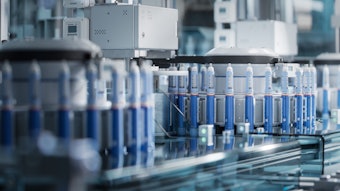
According to the American Association of Physician Assistants, more than 85,000 certified physician assistants (PAs) practice in the United States. That’s more than double the number practicing 10 years ago. The American Association of Nurse Practitioners reports that 192,000 nurse practitioners (NPs) are employed in the U.S., with an additional 14,000 completing their training annually. For many practice owners, such midlevel providers—also referred to as physician extenders (PEs)—help boost their bottom lines while improving patient care.
PAs and NPs can enhance a medical aesthetic practice by spending more time with patients, providing additional availability for appointments and allowing for a tiered pricing structure. “PAs are a welcome addition to the office, as long as they have the proper training,” says dermatologist Dore Gilbert, MD, of Newport Dermatology & Laser Associates in Newport Beach, California.
Before hiring a PE for your practice, consider the factors below.
Oversight Required
First, research state regulations and reimbursement rules. Some states allow PEs to prescribe all medications, while others require a supervising physician to sign all prescriptions. Some states require the physician to be onsite with the NP or PA when they are performing treatment, while others dictate that the physician must be reachable by phone. Also, some states do not allow PEs to order tests or to bill independently for their services. Requirements may also differ between physician assistants and nurse practitioners.
States typically follow one of these three regulatory models for NP oversight, according to the American Association of Nurse Practitioners (AANP):
Full Practice. An NP can evaluate patients; diagnose, order and interpret diagnostic tests; initiate and manage treatments—including prescribing medications and controlled substances—under the exclusive licensure authority of the state board of nursing.
Reduced Practice. An NP must have a regulated collaborative agreement with another healthcare provider to provide patient care, or there are limits regarding the setting of one or more elements of NP practice.
Restricted Practice. State law requires career-long supervision, delegation or team-management by another healthcare provider in order for the NP to provide patient care.
You can review your state’s regulations at AANP’s website
In 47 states, PAs must be supervised by a physician while Alaska and Illinois require a collaborative agreement with a physician. In New Mexico, only specialty PAs and those with fewer than three years experience require supervision. The American Medical Association offers a “State law chart on physician assistants’ scope of practice” at its website www.ama-assn.org.
In the majority of states, the supervising or collaborating physician at the practice site determines the PA’s scope of practice, but what “supervision” or “collaboration” entails varies. For example, in Alaska, collaborative plans must include “at least monthly telephone, radio, electronic or direct personal contact between the PA and the primary or alternate collaborating physician reviewing the PAs performance in the practice, knowledge, skills, patient care and healthcare records.”
Illinois’ state statute notes that collaboration “shall not be construed to necessarily require the personal presence of the collaborating physician at all times at the place where services are rendered, as long as there is communication available for consultation by radio, telephone, telecommunications or electronic communications.”
California does not require a collaborative agreement, but does require the physician to be available in person or by electronic communication at all times when the PA is caring for a patient. In addition, the supervising physician can delegate only tasks and procedures “consistent with the supervising physician’s specialty or usual and customary practice,” and the supervising physician is required to observe and/or review the PA’s performance until assured of competency.
In Washington state, the supervising physician and PA determine which procedures may be performed and the degree of supervision. Jennifer Reichel, MD, owner of Pacific Dermatology & Cosmetic Center, with two locations in Washington, has new PAs work directly with a physician for several weeks before they can see patients on their own. When ready, the PA will see patients on their own but meet with the doctor in charge afterward to give a report similar to that of a resident with an attending. They present the patient’s medical history, results of the physical and then a management plan. The doctor will then see the patient with the PA and assess the treatment plan. Eventually, the PAs see patients on their own and review with the supervising physician doctor on an as-needed basis.
Integrating a New Provider
Once the decision has been made to bring a PE into the practice, the physician-owner must determine how that person will function within the practice. Consider where there are gaps in care and how that provider can help fill them. For example, are there treatments that you do not want to provide and would like to delegate, or do you want to offer some of your most popular treatments at a lower price point to increase patient volume?
Dr. Gilbert works with his daughter, Melissa, who is a physician assistant. She has been with the practice for seven years and removes moles and cysts and performs Botox injections. “It’s like having another dermatologist in the office,” says Dr. Gilbert. Melissa sees patients on her own, and she and Dr. Gilbert seek out each other’s opinions on challenging cases.
Jennifer Winter, PA-C of Dermatology and Allergy Specialists of Olympia in Washington encourages physicians to be generous in their training of new PAs and NPs and look at it as an apprenticeship similar to the training a physician receives in residency. “Each will progress at a different pace,” she notes. “And take into account that additional reading and study outside the clinic can impact progress.”
Dr. Reichel agrees. In addition to in-office training, she requires her new PEs to pursue additional education by taking part in journal or book reviews.
Informed Consent and Liability
In addition to reviewing the recommended procedure, including risks and benefits, informed consent for patients being treated by a PE should include that the patient is aware of and comfortable with the fact that the provider of the service is an NP or PA and not a physician. Any patient who is uncomfortable being treated by a PA or NP should be referred to the physician, says Winter. “If they are only comfortable with a physician treating them, they should only have appointments with the physician,” she says. “However, if they are content with a PA/NP at scheduling, then they are most likely comfortable with them performing the procedure as well. But this should be noted because any adverse outcome can impact your licensing.”
Some practice owners worry that the addition of PEs may expose them to increased liability risks, but in fact they may help prevent malpractice incidents. PEs typically spend more time with patients than physicians do, which not only improves patient satisfaction but makes them more likely to uncover dissatisfaction.
Between 1991 and 2007, the majority of payouts for medical malpractice and negligence were made on behalf of physicians (37 percent), as opposed to physician assistants (3.1 percent) or nurse practitioners (1.5 percent), according to a March 2015 article in Medical Economics.
But if a patient is harmed as a result of a PE’s care, the practice and the supervising physician can be held liable. This is because the practice owner hired the provider and the physician determined that the PE was competent enough to perform the treatment. Therefore, proper training and protocols are crucial.
Keep a written list or description of procedures that PEs may perform. These guidelines should be enforced by the supervising physician. Physicians should also periodically review patient charts for quality assurance, in addition to routine cosigning of notes.
Also, make sure you adhere to all state requirements and that your PEs have access to the supervising physician during treatments, whether in-person, by phone or by computer, in case questions or complications arise.
Dr. Reichel encourages physicians to spend time with their PEs before they see patients on their own to ensure that they are well-trained. “Continue to teach at every opportunity,” she says. “But don’t provide too much oversight. Once you know the PE is capable, they should be free to do their jobs.”
Tina O’Reilly is a freelance writer based in Rhode Island.
Image copyright Getty Images











